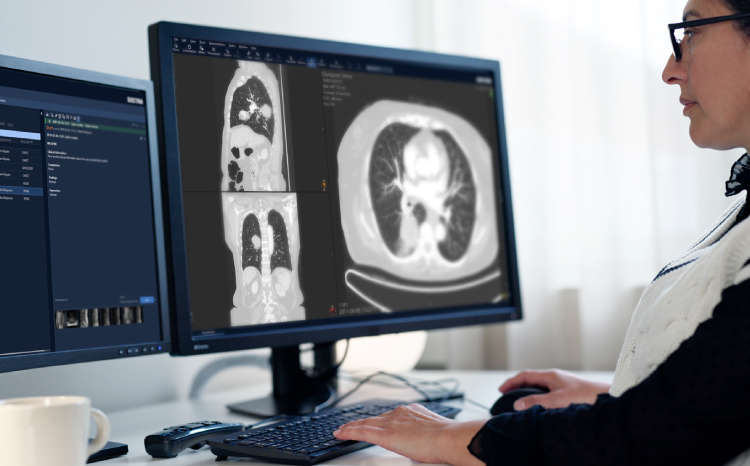Spine could be engineered for XDS-I
- 31 March 2010
Engineering the NHS Spine to support an XDS-I based solution for medical image sharing is “possible, but reasonably hard”, BT technologists have concluded.
Joseph Waller, chief architect of the Spine, gave the verdict to the spring meeting of the Royal College of Radiologists’ PACS and Teleradiology Group, following a series of workshops and consultations with NHS Connecting for Health and the PACS community.
Waller and BT colleagues were tasked by CfH and the RCR with working out how hard it would be to make the existing infrastructure of the Spine compliant with XDS-I (Cross-enterprise Document Sharing for Imaging), an IHE profile dedicated to sharing images electronically between healthcare organisations.
XDS and XDS-I offer the prospect of a solution to current image sharing problems, but Waller noted: “XDS-I describes a framework with significant areas yet to be specified and built. [It is] still maturing without universal supplier buy-in.”
Nevertheless the BT team concluded that the Spine provided “a general fit” for compliance with XDS-I.
The issue is of vital importance in radiology where images are shared in numerous situations including: emergency and routine transfers of patients, obtaining second opinions, teaching and multi-disciplinary team meetings.
One of the great attractions of going digital in radiography was the prospect of being able to share digital images much more easily than images produced on analogue film.
Achieving that in practice has proved difficult, with numerous tactical solutions springing up but no seamless national image sharing available yet.
One of the regional tactical image sharing solutions was reported at the group meeting by Accenture, the PACS local service provider for the four strategic health authorities in the North, Midlands and East of England.
Accenture PACS Connect is a pixel-on-demand image viewer and workflow engine now working in five trusts, Accenture consultant, Rupert Eve, told the meeting.
He explained that the combination of large medical images and small networks that are not likely to change in the near future led Accenture to conclude that moving images around in order to share them was not going to work.
Accenture PACS Connect is enabling authorised users to view 3D images over a 3G modem an offer diagnostic quality viewing over home broadband or in a GP surgery.
Accenture partner, Eric Sandor, gave a candid view of the successes and failures of Accenture’s role as an LSP.
“LSPs need to work more collaboratively with trusts rather than rely on responding to central direction. While doing this we need to ensure that standardisation is not thrown out. Trusts have at times felt taken for granted and not listened to,” he said.
Accenture was listening and responding he claimed citing the PACS Connect interim solution as an example of this. “It’s a long road we are going on but we believe we have been responding and learning,” said Sandor.
Responding to a comment from the audience that third parties had siphoned money out of services, Sandor stated that Accenture lost half a billion US dollars when it pulled out of the main part of its contract with NHS National Programme for IT and he doubted whether the firm would ever recover that loss.




